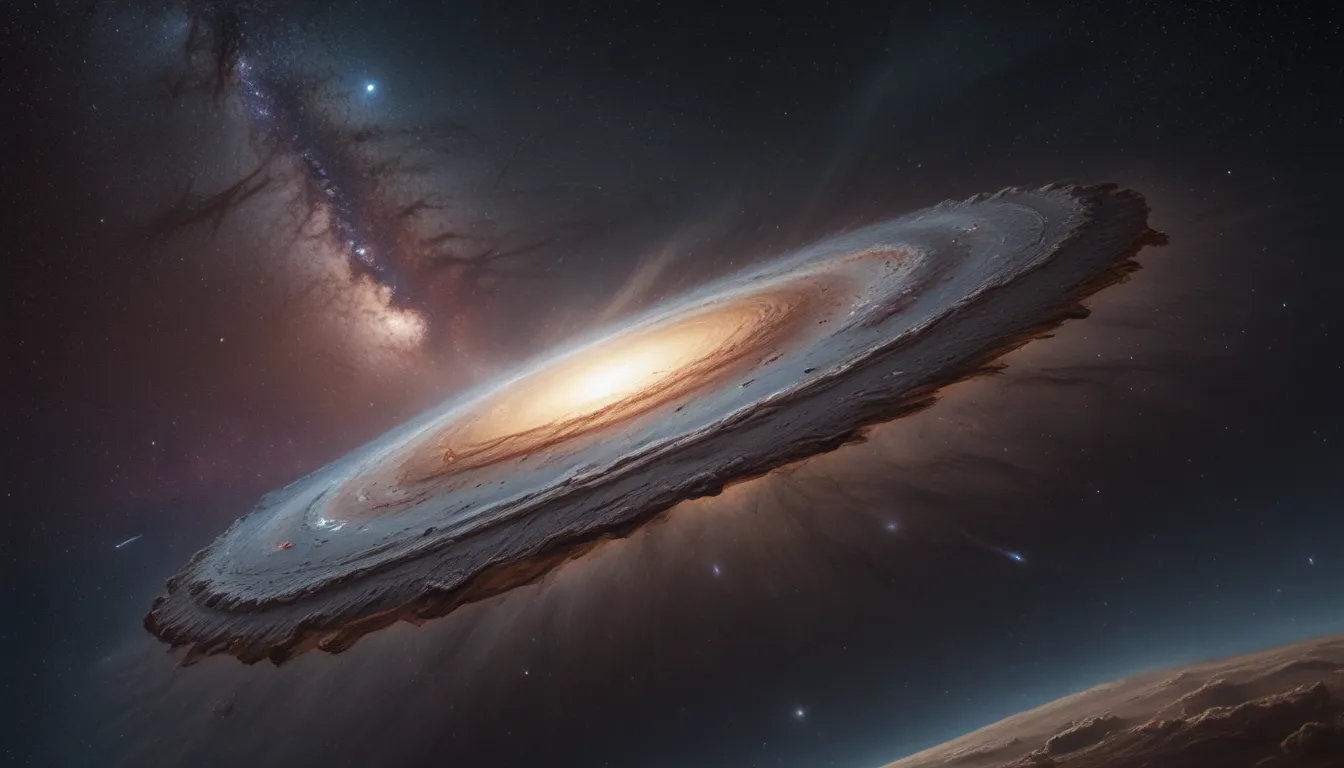The pictures we use in our articles might not show exactly what the words say. We choose these pictures to make you interested in reading more. The pictures work together with the words but don’t take their place. The words still tell you the important facts.
Welcome to the captivating world of Messier 106 (M106), a spiral galaxy filled with wonders that continue to amaze astronomers and space enthusiasts alike. Situated 23.7 million light-years away in the constellation Canes Venatici, M106 beckons us to unravel its mysteries and embrace the beauty of the cosmos. Join us on a journey through 19 surprising facts about this celestial gem that will leave you in awe.
Unveiling the Enigmatic M106
Let's start by delving into the key takeaways that showcase the allure of M106. This spiral galaxy, adorned with intricate spiral arms and a supermassive black hole, offers valuable insights into galaxy evolution. Emitting powerful radio waves and X-rays, M106 stands as a captivating cosmic wonder that sparks curiosity and scientific exploration.
Discovering the Marvels of M106
1. M106: A Spiral Galaxy
M106 shines as a classic example of a spiral galaxy, characterized by its distinct spiral arms that weave a mesmerizing tapestry across the cosmos.
2. Location in Canes Venatici
Nestled in the constellation Canes Venatici, M106's presence adds to the celestial charm of the sky. The constellation's name, meaning "hunting dogs," pays homage to its resemblance to a pair of loyal companions.
3. Discovery by Pierre Méchain
In 1781, French astronomer Pierre Méchain first laid eyes on M106 during his nightly observations. His discovery later found a place in Charles Messier's catalog of celestial objects, immortalizing M106's presence in the universe.
4. Alias: NGC 4258
Known as NGC 4258 in astronomical circles, M106 joins the ranks of numerous celestial objects cataloged in the New General Catalogue (NGC), showcasing its significance in the cosmic landscape.
5. Active Galactic Nucleus
At the heart of M106 lies an active galactic nucleus, harboring a supermassive black hole that feeds on surrounding matter, unleashing massive amounts of energy into the cosmos.
6. Distance from Earth
Traveling 23.5 million light-years to reach us, M106 stands as a cosmic neighbor, beckoning us to explore its vast reaches and unravel its secrets.
7. Diameter of M106
Spanning an impressive 135,000 light-years in diameter, M106's majestic size surpasses that of our own Milky Way galaxy, showcasing the grandeur of the cosmos.
8. High Rate of Star Formation
Fueled by its active galactic nucleus and abundant resources, M106 boasts a high rate of star formation, creating a dynamic and vibrant stellar landscape within its bounds.
9. Splendid Spiral Arms
The graceful spiral arms of M106 dance through space, composed of stars, gas, and dust that form intricate patterns mirroring the elegance of the galaxy.
10. Companion Galaxy: NGC 4248
Accompanying M106 is the smaller NGC 4248, engaging in gravitational interactions that add complexity and intrigue to the cosmic interplay between galaxies.
11. Radio Waves Emission
M106's emission of powerful radio waves attracts the attention of radio astronomers, offering valuable insights into the galaxy's structure and evolution.
12. Observation by Space Telescopes
Space telescopes like the Hubble Space Telescope and the Chandra X-ray Observatory have cast their gaze upon M106, revealing detailed insights into its composition and behavior.
13. Voracious Black Hole
M106's supermassive black hole devours surrounding matter with voracious appetite, releasing intense radiation as it shapes the cosmic landscape within the galaxy.
14. Luminous Central Region
The luminous heart of M106 pulsates with the energy of star formation and active galactic processes, painting a mesmerizing picture of cosmic activity within the galaxy.
15. Member of the M106 Group
M106 finds itself in the company of other galaxies in the M106 Group, forming a cosmic neighborhood that offers a tapestry of interactions and shared cosmic destinies.
16. X-ray Emission Source
As a prominent source of X-ray emission, M106 reveals hot gases surrounding its active nucleus, shedding light on the inner workings of the galaxy.
17. Captured by Spitzer Space Telescope
The Spitzer Space Telescope unveils the hidden beauty of M106 through its infrared lens, capturing the galaxy's dust distribution and star-forming regions in stunning detail.
18. Intricate Spiral Arm Patterns
The intricate patterns of M106's spiral arms unfold a cosmic dance of gravitational forces and stellar movements, showcasing the dynamic and ever-evolving nature of the galaxy.
19. Insights into Galaxy Evolution
By studying M106 and its unique properties, astronomers glean valuable insights into the processes that drive galaxy evolution, expanding our understanding of the cosmic tapestry.
Embarking on a Cosmic Journey
As we conclude our exploration of Messier 106, we are reminded of the boundless wonders that await us in the universe. M106's enigmatic features and captivating allure serve as a beacon of discovery, inviting us to unravel the mysteries of the cosmos.
Conclusion: Embracing the Marvels of M106
From its active galactic nucleus to its intricate spiral arms, M106 unveils a wealth of scientific discoveries that enrich our understanding of the universe. As we continue to unravel its secrets through technological advancements and astronomical observations, M106 stands as a luminary in the cosmic expanse, guiding us towards greater cosmic truths.
Unveiling the Mysteries of M106: FAQs
- Distance to Earth: Approximately 23.7 million light-years away.
- Size of M106: 135,000 light-years in diameter, larger than the Milky Way.
- Supermassive Black Hole: Estimated to have a mass 40 million times that of the Sun.
- Composition of Spiral Arms: Comprised of gas, dust clouds, young hot stars, and star-forming regions.
- Interacting Galaxies: Engaging with NGC 4248, resulting in cosmic interactions and distortions.
- Visibility: Requires a telescope to observe, not visible to the naked eye.
- Best Observation Time: Spring and early summer peak viewing times in the northern hemisphere.
- Discovery: Found by Pierre Méchain in 1781, later included in Charles Messier's catalog.
- Exoplanets: No exoplanets discovered within M106 to date.
- Unique Features: Active galactic nucleus, intricate dust lanes, and vibrant star-forming regions set M106 apart in the cosmic tapestry.
Join the Cosmic Exploration
Embark on an unforgettable journey through the celestial wonders of Messier 106, where each discovery unveils a new layer of the universe's grand design. From the depths of space to the mysteries of black holes, let your curiosity guide you as you uncover the secrets that shape our understanding of the cosmos. Dive into the marvels of astrophysics, astronomy, and beyond, and witness the awe-inspiring beauty of the universe in all its glory.
Join Our Quest for Cosmic Knowledge
Our commitment to delivering authentic and engaging content is at the core of our mission. Every fact on our site is contributed by individuals like you, creating a diverse tapestry of knowledge and insights. Rest assured that each submission undergoes rigorous review by our dedicated editors to ensure accuracy and reliability. Trust in our dedication to quality as you explore, learn, and embark on a journey of discovery with us through the cosmos.






